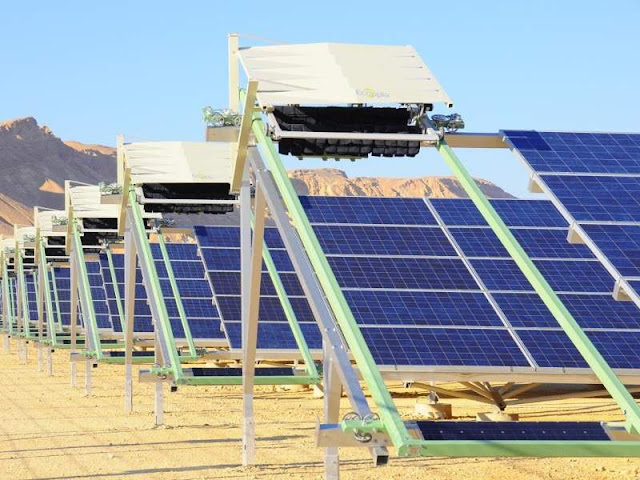Bhadla is in Jodhpur district in Rajasthan, India, where the Bhadla Mega Solar Power Park is under construction. This park is spread over 40 sq km and has a proposed capacity of 2255 MW. The Bhadla itself is a 45 sq km area which is a sandy and arid region with temperatures rising to 46 - 48 degrees and thus makes this a favorite place for a solar power plant. This project is set to be India's mega-project within one or two years.
As this place is arid and sandy, frequent dust storms are seen, and hence cleaning of panels is necessary for sufficient energy generation. But a place such as this cleaning of the panel with water would be very expensive and not favorable. This system is also connected with a small solar panels to work independently. Thus Automated robotic PV cleaning solution is adopted here and it ensures peak output even in toughest conditions.
Now the generated power which is in DC form is connected to Ac generator to convert it to Ac and it is Stepped Up and transferred through the transmission line. This is how clean and green energy is distributed to consumers.
Check This: India's and World's Largest Solar Project
As in recent years, we have seen commitments of government and other organizations we are in a solar revolution wherein we see Karnataka's Pavagada Solar Project aims for 2700 MW once commissioned. Rajasthan is also in this race with many other projects and aims for 3780 MW.


Comments
Post a Comment
Thank You for visiting, if you have any questions please feel free to ask: